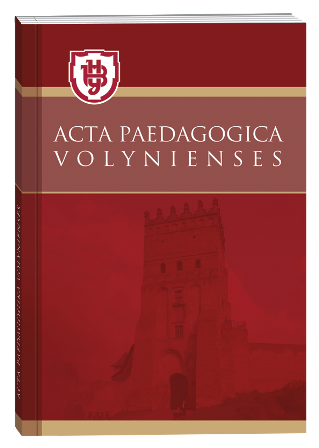USE OF BEE-BOT ROBOTS IN PRIMARY SCHOOL
DOI:
https://doi.org/10.32782/apv/2024.2.12Keywords:
robots, Bee-Bot, “smart bee”, education, primary school.Abstract
The article discusses the use of Bee-Bot educational robots in primary school as an innovative teaching tool. The authors substantiate the relevance of introducing robotics into the educational process in view of global digitalization and robotization of various spheres of life. The authors describe the key characteristics of the Bee-Bot robot, including its simple design, robust construction, safety in use, and convenient operation. It is emphasized that the robot allows programming up to 40 commands simultaneously, which makes it an effective tool for teaching the basics of algorithmization and programming. The authors highlight the main advantages of using Bee-Bot in the educational process: simplicity and accessibility of the interface, structural strength, multifunctionality, the ability to integrate with various educational subjects, and the availability of visual feedback. It is noted that the robot promotes the development of logical, algorithmic and critical thinking of students. The article provides specific examples of how Bee-Bot can be used in the classroom, including retelling stories, creating one’s own stories, and solving math problems. The article describes various ways to complicate the tasks of programming the robot to deepen students’ understanding of coding principles. Particular attention is paid to the interdisciplinary potential of Bee-Bot. The authors emphasize that the robot can be effectively used to teach math, language, geography, and other subjects, making learning more holistic and contextually relevant. The article also highlights the social aspects of using Bee-Bot, including its role in developing teamwork, communication skills, and collective problem solving among students. The authors conclude that the introduction of robotics, in particular Bee-Bot, in primary school is a promising area of modernization of the educational process, which contributes to the formation of key competencies of students required in the 21st century.
References
Чаплінська, Ю. С. Роботи в освітній сфері. Освіта і суспільство, 2020. C. 7–8.
Bee Bots in the Elementary Classroom. URL: Bee Bots in the Classroom | Smore Newsletters
Chiazzese G., Arrigo M., Cifari A., Lonati V. Educational Robotics in Primary School: Measuring the Development of Computational Thinking Skills with the Bebras Tasks, 2019. № 6 (4), С. 43–55. URL: https://www.mdpi.com/2227-9709/6/4/43
Newsam B. Five ways Beebots can teach students : Fizzics Education. 2022. URL: https://www.fizzicseducation.com.au/articles/5-ways-beebots-can-teach-students/
Morgan G. Introducing The Bee-Bot. 2023. URL: https://www.thedigitallearningden.co.uk/pages/blog?p=introducing-the-bee-bot
Matthew Gillard. STEAM to Life in the Primary Classroom with the Bee-Bot. 2023. URL: https://www.linkedin.com/pulse/bringing-steam-life-primary-classroom-bee-bot-value-bundle-gillard-ztpzc/
Лусте, І., Яшан, Б., Пукальський, І. Перспективи застосування BEE-BOT у навчальному процесі. SWorldJournal, 2022. № 1 (14–01), С. 73–77. https://doi.org/10.30888/2663-5712.2022-14-01-001
Lathifah А., Budiyanto С, Yuana R. The contribution of robotics education in primary schools: Teaching and learning Cite as: AIP Conference Proceedings 2194, 020053. 2019. https://doi.org/10.1063/1.5139785 Published Online.







